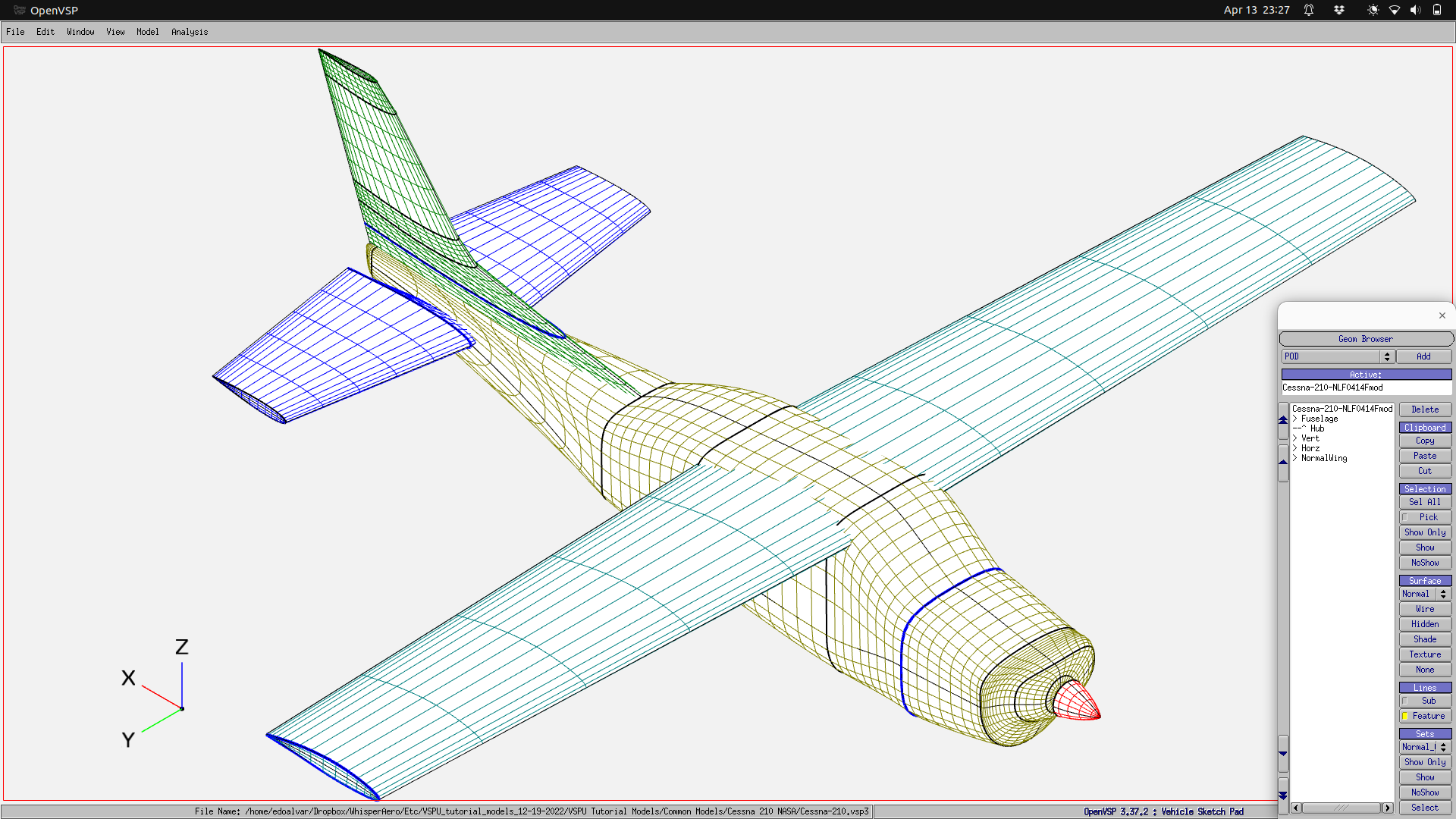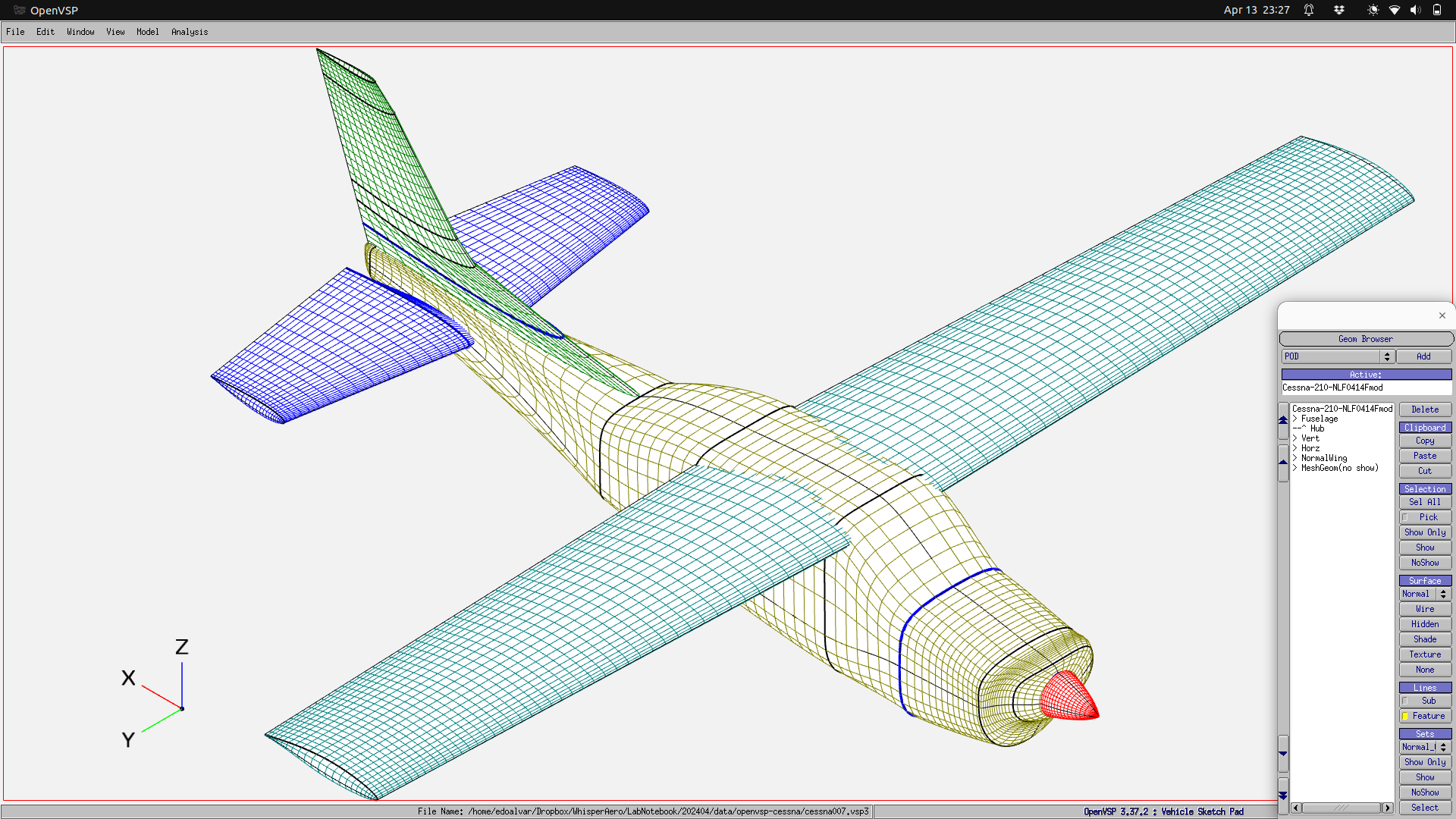
In this example we analyze a Cessna 210 aircraft that is generated using OpenVSP. We show how to polish and mesh the OpenVSP model, and the mesh is then read by FLOWPanel using Meshes.jl.
To run this tutorial you will have to install a few dependencies for processing unstructured grids:
import Pkg
Pkg.add(Meshes)
Pkg.add(GeoIO)
Pkg.add(Rotations)OpenVSP Model
We will use the Cessna 210 model that is available in the OpenVSP Ground School as the starting point (you can also download the .vsp3 file directly from here, right click → save as...). Follow the steps below to polish the model, mesh it, and export the mesh.
Polish the Model
If you try to run the model as-is through the OpenVSP aero solver, you might notice that VSPAERO crashes. This is an indication that the model needs some clean up and polish before we can do any numerical analysis with it.
We recommend doing the following modifications to the model,
- Round up the wing tips to avoid sharp edges
- Sharpen the wing trailing edge
- Merge the prop spinner with the main body by translating it to close the gap
- Adequately adapt the mesh resolution:
- Refinement towards wing tips
- Refinement towards both wing LE and TE
- Avoid abrupt changes in cell sizes


Quality Check
Make sure that the OPENVSP aero solver (VSPAERO) can successfully perform analysis with the mesh:
- Confirm that the analysis completes without returning
nans - Confirm that the analysis returns reasonable values for $C_L$ and $C_D$
- Visualize the wake and make sure that the body is not improperly interfering with the wake (e.g.,, wake penetrating into the body)
- Visualize $C_p$ and make sure that there aren't any regions where the solution blows up
If VSPAERO can't successfully do numerical analysis with this mesh, it is likely that FLOWPanel will also fail.
Export
- Export mesh:
File > Export > Gmsh (.msh) - Export NURBS:
File > Export > Untrimmed STEP (.stp), set length unit toMM, and set tolerance to1e-12=
OpenVSP exports .msh files in an older format that is not compatible with Meshes.jl, so here we recommend using Gmsh to convert the .msh file to a newer version:
- Open the
.mshfile in Gmsh - Re-export
.mshin ASCII format v4:File > Exportand selectMesh - Gmsh MSH (*.msh)in the dropdown menu
The resulting .msh and .stp files are available here: cessna.msh cessna.stp (right click → save as...).